Discovered by A. de Gasparis Pronunciation /haɪˈdʒiːə/ Alternative names A900 GA Discovered 12 April 1849 Orbits Sun | Discovery date 12 April 1849 Orbital period 2,031 days | |
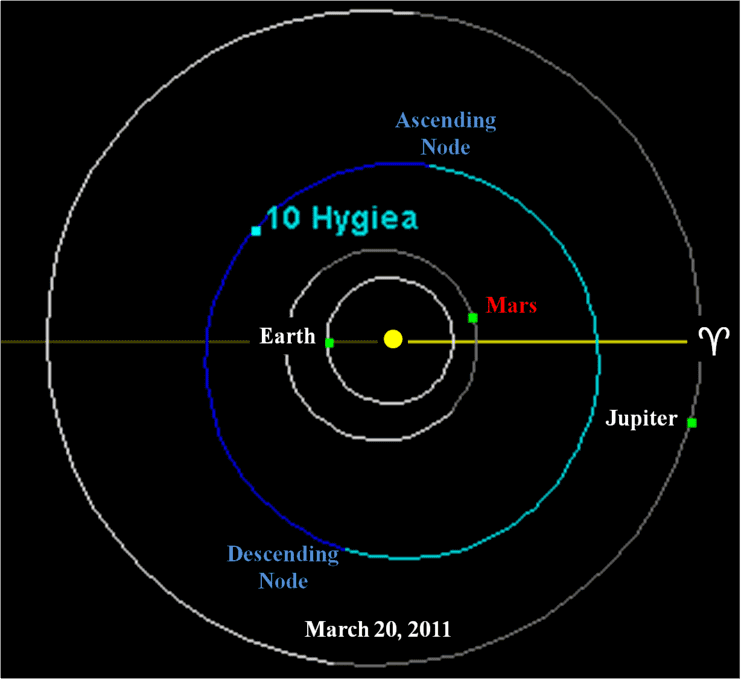 | ||
Minor planet category Main belt (Hygiea family) Similar Annibale de Gasparis discoveries, Other celestial objects | ||
10 Hygiea is the fourth-largest asteroid in the Solar System by volume and mass, and it is located in the asteroid belt. With somewhat oblong diameters of 350–500 kilometres (220–310 mi) (217–310 miles) and a mass estimated to be 2.9% of the total mass of the belt, it is the largest of the class of dark C-type asteroids with a carbonaceous surface.
Contents
- Asteroid 10 hygiea aug 2012
- Observation
- Discovery and name
- Physical characteristics
- Orbit and rotation
- References
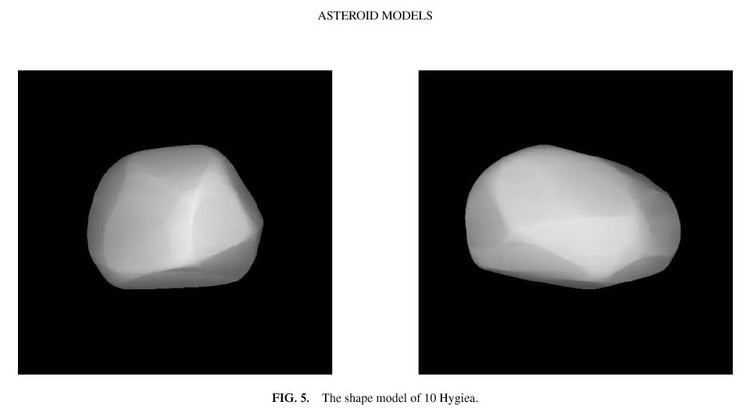
Asteroid 10 hygiea aug 2012
Observation
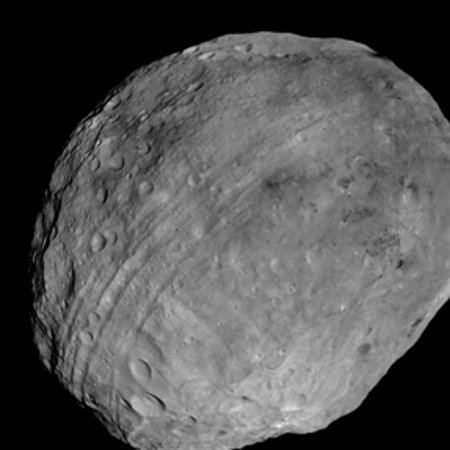
Despite its size, Hygiea appears very dim when observed from Earth. This is due to its dark surface and larger-than-average distance from the Sun. For this reason, many smaller asteroids were observed before Annibale de Gasparis discovered Hygiea on 12 April 1849. At most oppositions, Hygiea has a magnitude that is four magnitudes dimmer than Vesta's, and observing it typically requires at least a 100-millimetre (4 in) telescope. However, while at a perihelic opposition, it can often be observed just with 10x50 binoculars.
Discovery and name
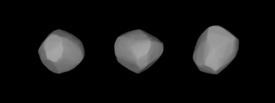
On 12 April 1849, in Naples, Italy, astronomer Annibale de Gasparis (age 29) discovered Hygiea. It was the first of his nine asteroid discoveries. The director of the Naples observatory, Ernesto Capocci, named the asteroid. He chose to call it Igea Borbonica ("Bourbon Hygieia") in honor of the ruling family of the Kingdom of the Two Sicilies where Naples was located.
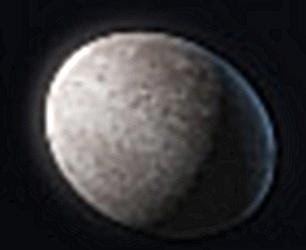
In 1852, John Russell Hind wrote that "it is universally termed Hygiea, the unnecessary appendage 'Borbonica' being dropped" (as well as the final "ia" in favor of just "a"). The name comes from Hygieia, the Greek goddess of health, daughter of Asclepius (Aesculapius for the Romans). The name was occasionally misspelled Hygeia in the 19th century, for example in the Monthly Notices of the Royal Astronomical Society.
Physical characteristics
Based on spectral evidence, Hygiea's surface is thought to consist of primitive carbonaceous materials similar to those found in carbonaceous chondrite meteorites. Aqueous alteration products have been detected on its surface, which could indicate the presence of water ice in the past which was heated sufficiently to melt. The primitive present surface composition would indicate that Hygiea had not been melted during the early period of Solar System formation, in contrast to other large planetesimals like 4 Vesta.
Hygiea is the main member of the Hygiea family and contains almost all the mass (well over 90%) in this family. It is the largest of the class of dark C-type asteroids that are dominant in the outer asteroid belt—which lie beyond the Kirkwood gap at 2.82 AU. Hygiea appears to have a noticeably oblate spheroid shape, with an average diameter of 444 ± 35 km and a semimajor axis ratio of 1.11. This is much more than for the other objects in the "big four"—2 Pallas, 4 Vesta and the dwarf planet Ceres. Aside from being the smallest of the four, Hygiea, like Ceres, has a relatively low density, which is more comparable to the icy satellites of Jupiter or Saturn than to the terrestrial planets or the stony asteroids.
Although it is the largest body in its region, due to its dark surface and larger-than-average distance from the Sun, Hygiea appears very dim when observed from Earth. In fact, it is the third dimmest of the first twenty-three asteroids discovered, with only 13 Egeria and 17 Thetis having lower mean opposition magnitudes. At most oppositions, Hygiea has a magnitude of around +10.2, which is as much as four orders fainter than Vesta, and observation calls for at least a 4-inch (100 mm) telescope to resolve. However, at a perihelic opposition, Hygiea can reach +9.1 and may just be resolvable with 10x50 binoculars, unlike the next two largest asteroids in the asteroid belt, 704 Interamnia and 511 Davida, which are always beyond binocular visibility.
At least 5 stellar occultations by Hygiea have been tracked by Earth-based astronomers, but all with few independent observers so that little was learned of its shape. The Hubble Space Telescope has resolved the asteroid and ruled out the presence of any orbiting companions larger than about 16 kilometres (9.9 mi) in diameter.
Orbit and rotation
Generally, Hygiea's properties are the most poorly known out of the "big four" objects in the asteroid belt. Its orbit is much closer to the plane of the ecliptic than those of Ceres, Pallas or Interamnia, but is less circular than Ceres or Vesta with an eccentricity of around 12%. Its perihelion is at a quite similar longitude to those of Vesta and Ceres, though its ascending and descending nodes are opposite to the corresponding ones for those objects. Although its perihelion is extremely close to the mean distance of Ceres and Pallas, a collision between Hygiea and its larger companions is impossible because at that distance they are always on opposite sides of the ecliptic. In 2056, Hygiea will pass 0.025AU from Ceres, and then in 2063, Hygiea will pass 0.020AU from Pallas. At aphelion Hygiea reaches out to the extreme edge of the asteroid belt at the perihelia of the Hilda family which is in 3:2 resonance with Jupiter. Hygiea is used by the Minor Planet Center to calculate perturbations.
Hygiea is an unusually slow rotator, taking 27 hours and 37 minutes for a revolution, whereas 6 to 12 hours are more typical for large asteroids. Its direction of rotation is not certain at present, due to a twofold ambiguity in lightcurve data that is exacerbated by its long rotation period—which makes single-night telescope observations span at best only a fraction of a full rotation—but it is believed to be retrograde. Lightcurve analysis indicates that Hygiea's pole points towards either ecliptic coordinates (β, λ) = (30°, 115°) or (30°, 300°) with a 10° uncertainty. This gives an axial tilt of about 60° in both cases.
